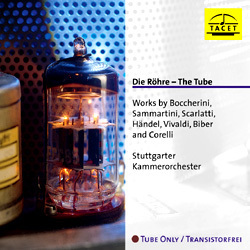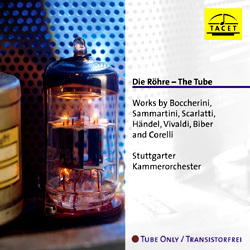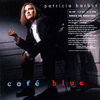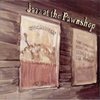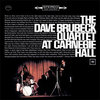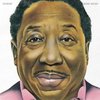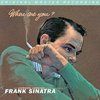AAA 100% Analogue This LP was Remastered using Pure Analogue Components Only from the Master Tapes through to the Cutting Head
Tacet - L 74 - 180 Gram Virgin Vinyl
Limited Edition - Pure Analogue Audiophile Mastering
AAA 100% Analogue - Analogue Recording - Pressed at Pallas Germany
The hefty 180 gram disc is dead silent -- truly impressivel. Given the care lavished on the recording chain, the Sound is bound to be well above average." EnjoytheMusic Review
TAS Rated 4/5 Music, 4/5 Sonics in the October 2011 Issue of The Absolute Sound
The title of this record is The Tube because they used tubes every step of the way. From a Neumann M49 (tube mic) to the tube mixer and amplifier to a Telefunken M5 tape recorder and finally mastered with tubes. Throughout this gatefold album there are many beautiful pictures of the vintage recording equipment used on this recording with explanations of the pain staking processes they went through to achieve the great sound you will hear on this album.
Works by Corelli, Biber, Vivaldi, Boccherini and Sammartini - Stuttgarter Kammerorchester
No conductor, no semiconductor--I beg your pardon?
The Stuttgart Chambert Orchestra: Leader-Bejamin Hudson, Violin 1-Benjamin Hudson, Wolfgang Kussmaul, Midori Tanaka, Adriana Ringler, Manfred Wetzler, Violin 2-Henning Trubsbach, Attila Demus, Lian MacPhasil, Onur Kerstel, Viola-Tetsuya Hayashi, Hans-Joachim Dann, Stanislas Bogucz, Emanule Wieck, Violoncello-Gyorgy Bognar, Reinhard Werner, Doublebass-Konrad Neander, Harpischord-Rien Voskuilen.
Q: Just what's going on here? No conductor? No transistors (=semi-conductor)?
A: New recordings and new old techniques.
About 50 years ago the transistor was invented - and it changed our world! No computer, no piece of household equipment can be imagined without it. But what about audio technique? We were curious. Did something get lost? And if so, what? And then - a CD or LP without transistors? Is that feasible?
"Looking backwards for Progress -
... one of the most realistic classical recordings ever. And how come? - ... The question as to whether the intoxicating, natural and powerful sound is due in the main to a transistor-free, analogue recording or to an equally careful and puristic interpretation remains redundant when listening. The Stuttgart Chamber Orchestra performs these Italian works from the pre-Classical era with glorious sturdiness; one can just picture Biber's beer-swilling and grotesque "Battaglia" while Handel's Concerto Grosso Op. 6 No. 2 is beautifully pastoral. A Baroque delight."
Inspiring Tube Sound:
What is it that makes "tube sound" what it is? The advantages of tubes over transistors are difficult to describe in technical terms. Perhaps the reference to the higher and different type of distortion with tube amplifiers is most applicable, although "distortion" has a rather negative meaning: the more distortion, the worse it is. So this can't be entirely right. Besides, the distortions of these microphones of 1947 are much too slight to be really noticeable. The recording of the Partitas of Johann Sebastian Bach with Florin Paul is, for me, although meanwhile almost 23 years old, still the best example in our TACET catalogue of the special quality of tube microphones. The two U 47 microphones by Neumann made their contribution.
For the LP, however, (except for rare exceptions, justified for musical reasons) the signal is even stored on a tube tape recorder and then mastered with valve equipment, so that one would be right in saying that for the entire production not a single transistor was used.
We have always been especially pleased to receive so much feedback about our Tube Only productions. This motivates us even more to keep working with this technology and rescue it from oblivion. People have told us that the music sounds warmer, without losing any of its TACET brilliance. The timbres glow more. We have also heard that people have the impression of a more homogeneous sound, whatever that is meant to be. So let everyone listen to their own hearts and to the Tube Only recordings and feel something special! Even the sheer joy of this slightly nostalgic outstanding technology can be reason enough to like these productions. Yet what would it all be without the wonderful work of the artists!
"It′s easy to see where the folks at TACET are coming from. Besides the title, three of the four sides of this gatefold album celebrate glowing glass. Beautifully detailed photos and the text narrative relate in detail the story of locating and restoring the completely tube-driven recording chain, and the meticulous process of manufacturing this "transistor-free" LP. .
I often find this sort of audiophilia uber alles approach irritating, but TACET skates through for two reasons: the sound is in fact absolutely stunning, and the well chosen baroque compositions receive buoyant performances. The Tube can by no means be lumped into the "great sound/lousy music" category so often encountered in audiophile recordings.
About that sound: I have seldom heard on any record such beguiling warmth and sheer tonal beauty from a body of strings. The hall acoustic is moderately reverberant and sufficiently distant to avoid any in-your-face quality. (This otherwise impressively notated album for some reason does not specify the recording location.) Solos emerge naturally from the group in true baroque concertante style, with no spot-miking. Corelli′s Opus 6 Concerti Grossi are a cornerstone of the baroque repertoire. The present performance of No. 7 doesn′t really challenge the incisive and energetic reading by Nicholas McGegan and the Philharmonia Baroque on Harmonia Mundi, but its lush beauty is completely seductive. The Vivaldi, at less than four minutes, seems like a perfect redaction of the three-movement Vivaldi violin concerto, with all of the usual gestures in place. The Sammartini offers a particularly lovely slow movement.
But most interesting are the earliest and latest compositions offered here. Biber′s 1674 Battalia is early program music, replete with special effects such as striking the instrument bodies and drawing paper through the strings -- a truly eerie sound. It′s a hoot. And if you like this, check out Biber′s violin sonatas played by Romanesca on Harmonia Mundi, in which the composer sometimes has the musicians imitate birds and animals. A fun guy, that Ignaz. The 1780 Boccherini piece is also programmatic. While not as delightfully wacky as the Biber, it is also a charmer.
Many listeners will know the Stuttgart Chamber Orchestra from its many Decca/London recordings under conductor Karl Munchinger. Here the ensemble is reduced to 17 players, including first violinist Benjamin Hudson, who in baroque fashion serves as Leader in lieu of a conductor with baton. (The pics of the album proclaims, "no conductor, no semiconductor." I love it!) The ensemble plays with precision, finesse and infectious spirit. I find myself smiling with pleasure as soon as this record begins to play -- and I′ll bet you would too.
The hefty 180 gram disc is dead silent -- truly impressivel. Given the care lavished on the recording chain, the Sound is bound to be well above average." EnjoytheMusic Review
1 Concerto grosso op. 6 no. 7 D major Vivace - Allegro - Adagio Arcangelo Corelli (1653 - 1713)
Benjamin Hudson
Wolfgang Kussmaul
Stuttgarter Kammerorchester
György Bognar
2 Allegro Arcangelo Corelli (1653 - 1713)
Benjamin Hudson
Wolfgang Kussmaul
Stuttgarter Kammerorchester
György Bognar
3 Andante largo Arcangelo Corelli (1653 - 1713)
Benjamin Hudson
Wolfgang Kussmaul
Stuttgarter Kammerorchester
György Bognar
4 Allegro Arcangelo Corelli (1653 - 1713)
Benjamin Hudson
Wolfgang Kussmaul
Stuttgarter Kammerorchester
György Bognar
5 Vivace Arcangelo Corelli (1653 - 1713)
Benjamin Hudson
Wolfgang Kussmaul
Stuttgarter Kammerorchester
György Bognar
6 Battalia à 10 Heinrich Ignaz Franz Biber (1644 - 1704)
Stuttgarter Kammerorchester
Konrad Neander
7 Concerto alla Rustica G major RV 151 Presto Antonio Vivaldi (1678 - 1741)
Stuttgarter Kammerorchester
8.Adagio Antonio Vivaldi (1678 - 1741)
Stuttgarter Kammerorchester
9 Allegro Antonio Vivaldi (1678 - 1741)
Stuttgarter Kammerorchester
10 La Musica Notturna delle strade di Madrid Luigi Boccherini (1743 - 1805)
Benjamin Hudson
Stuttgarter Kammerorchester
Henning Trübsbach
György Bognar
11 Sinfonia F major JC 35 Allegro Giovanni Batista Sammartini (1700 - 1775)
Benjamin Hudson
Stuttgarter Kammerorchester
12 Andante Giovanni Batista Sammartini (1700 - 1775)
Benjamin Hudson
Stuttgarter Kammerorchester
13 Allegro Giovanni Batista Sammartini (1700 - 1775)
Benjamin Hudson
Stuttgarter Kammerorchester

